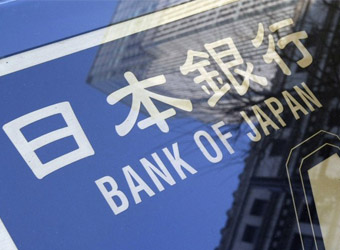The Bank of Japan maintained its massive monetary stimulus on Tuesday on the view that growth in the economy and consumer prices remains on track, but it downgraded its view of exports in a warning that external demand will continue to disappoint.
The BOJ did upgrade its view of capital expenditure and turn more optimistic about industrial production, showing more confidence in domestic demand before a sales tax increase scheduled for April 1.
However, this optimism is unlikely to ease concerns that domestic demand will weaken after the tax hike and that exports will not be strong enough to support growth, which could increase calls for more monetary stimulus.
“It is not an atmosphere where the BOJ will ease immediately even if it downgrades growth forecasts as core consumer prices have been hovering in a range higher than previously expected,” said Junko Nishioka, chief economist at RBS Securities.
“If the yen appreciates sharply and share prices plunge due to geopolitical risks, including the Ukraine, the BOJ will have to move.”
As expected, the central bank on Tuesday maintained its pledge of increasing base money, its key monetary policy gauge, at an annual pace of 60-70 trillion yen ($590-$690 billion).
The BOJ launched the stimulus last April, saying it would lift inflation to 2 percent within around two years via aggressive asset purchases as it sought to end 15 years of deflation.
BOJ Governor Haruhiko Kuroda will hold an embargoed news conference from 3:30 p.m. (0630 GMT) with his comments expected to come out any time after 4:15 p.m. (0715 GMT).
The yen and Japanese government bonds were little changed after the policy decision.
EXPORTS, CAPEX
The BOJ said that exports have leveled off recently, which was a downgrade from last month, when the central bank said exports were on a recovery path.
Japan posted a record current account deficit in January due to consistently weak exports, undermining the BOJ’s argument until now that exports would eventually pick up pace as the U.S. economy recovers.
The central bank said capital expenditure is showing clear signs of recovery, which is more positive than its assessment last month that business investment is recovering.
The BOJ also said industrial production is rising at a slightly faster pace.
Recent strength in industrial output, and signs companies are more willing to invest in factories and equipment as consumers buy more goods before the tax hike, likely encouraged optimists within the BOJ to take a more positive view of domestic demand.
The labor market is tightening, which also backs its view the economy will continue a gradual recovery and its 2 percent inflation target is achievable over the next 12 months or so.
Kuroda and other officials have been confident the economy can survive the short-term shock when the sales tax rate rises to 8 percent from 5 percent on April 1, but some economists worry growth could falter.
Core consumer inflation reached a five-year high of 1.3 percent in January, supporting the BOJ’s view that it will stay above 1 percent and accelerate again later this year. Some BOJ officials think prices are rising a tad faster than expected.
A Reuters poll last month showed economists expect the BOJ to ease policy further around the middle of the year, as they say it will otherwise be difficult to meet the inflation target.
Source: Reuters
